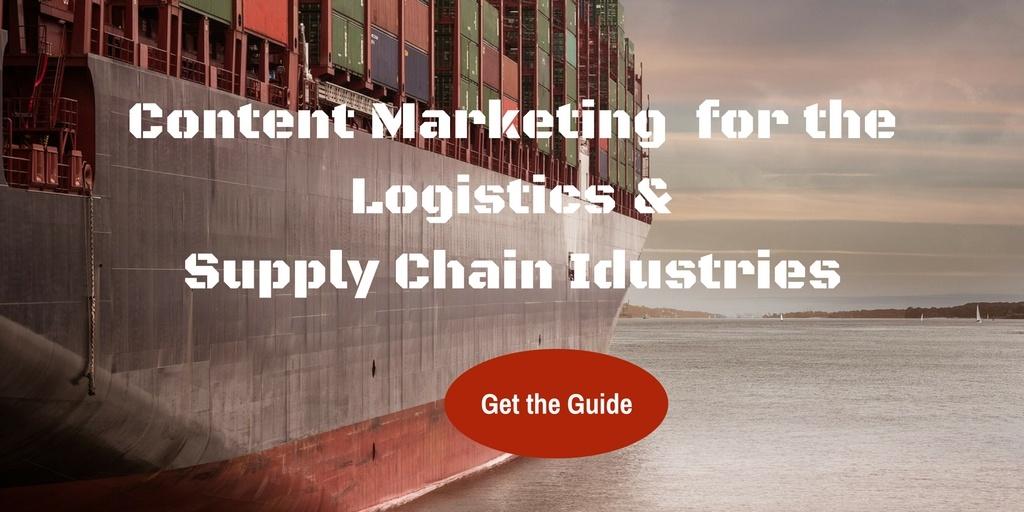
by Fronetics | Mar 21, 2017 | Blog, Diversity, Leadership, Supply Chain, Talent, Transportation & Trucking
The founder and president of Women In Trucking discusses bringing gender diversity to transportation.
Ellen Voie is successfully breaking down barriers and changing the perception of the trucking industry. As founder and president of Women In Trucking (WIT), Voie and her team work to promote the organization’s mission “to encourage the employment of women in the trucking industry, promote their accomplishments, and minimize obstacles faced by women working in the industry.”
Voie has been named a Transportation Innovator Champion of Change by the White House, a Fleet Owner Dozen Outstanding Woman in Trucking, and a Supply & Demand Chain Executive Magazine Pro to Know 2016. Her blog was recently named one of the top three logistics and supply chain blogs in 2017 by Fronetics readers.
I spoke with Voie about her experiences in the transportation industry, as well as her hopes for WIT and the future of women truckers.
Early career
After a semester pursuing broadcast journalism, Voie unexpectedly moved back to her hometown in Wisconsin for family reasons and got a job drafting at a steel fabricating plant. The company soon asked if she had any interest in moving over to their new traffic department. Tempted by the offer that they’d also put her through school for traffic and transportation management, Voie gladly accepted.
Voie was responsible for bringing in all the raw steel and shipping out the finished product for three plants. But, as a young female traffic manager, she noticed that she was a bit of an anomaly. “I remember walking into the traffic fraternity meeting and realizing I was the only woman there,” she says.
While she proved herself extremely competent and capable, Voie still met some resistance. “I was 20 years old, hiring drivers that would tell me, ‘I’ve been working longer than you’ve been alive!’”
But to drivers who struggled with the idea that she would be their boss, Voie simply replied, “If you have a hard time taking instruction from a female, then don’t apply.”
Voie would move on from the plant to work as a freelance transportation consultant, executive director of Trucker Buddy International, and manager of recruiting and retention programs at Schneider National. Her industry knowledge and capability earned her great respect in the industry and beyond.
Women In Trucking is born
Voie’s role at Schneider involved helping the company attract and retain drivers. She was asked to focus on four groups: returning military, Hispanics, seniors, and women. “So I started doing research on what women look for in a carrier,” she recalls. “I began to realize that the trucking industry as a whole did not do a very good job of focusing on bringing more women in.”
At the time she was working on getting her pilot’s license and belonged to a group called Women In Aviation. Voie thought to herself, “Why is there not an organization for women in trucking?”
The idea for WIT was born.
After launching in 2007, Women In Trucking was well received. “Companies thought, ‘Yes we should get more women!’” Voie says. And as the driver shortage became more critical, carriers became even more enthusiastic about hiring women drivers. They began to realize that, generally, women take fewer risks and make really good drivers.
Removing obstacles
One of the pillars of the WIT mission is to minimize the obstacles women face in the industry. When asked about the biggest challenges, Voie is resolute: “The biggest obstacle is image. Women outside the industry just don’t think about driving a truck. We need to show them that it’s not the same old physically demanding job that it used to be.”
One of Voie’s strategies for changing the industry’s image is by educating young girls about trucking. WIT has partnered with Girl Scout groups across the country to develop a transportation patch, for example. And Voie says she’s close to getting a female truck driver doll on toy store shelves.
Equipment is another major obstacle facing women in the industry, so Voie works with truck cab designers on ergonomics and truck cab design. Whether it’s changing the slope of dash and the closeness of the steps or adding more safety equipment and other creature comforts, “they are very interested in learning what it is that women want in a truck,” explains Voie.
Truck stops are similarly invested in making their facilities more amenable to female drivers. “They are always asking: How are the showers? How is safety and security? How are you treated when you go in?” Voie notes.
Voie says that though the percentage of female drivers has held pretty steady (around 7%), increased awareness has helped the industry become more accepting of and accommodating to them through the years. That’s in large part thanks to Women In Trucking providing a voice and advocating for women in the industry.
Leaning in
Another shift Voie has noticed in recent years is that carriers have begun actively recruiting women employees. They’re also celebrating female drivers and executives through events and functions, and building retention programs specifically targeting their female employees. Voie points to one company that created a female driver liaison to handle all calls and concerns from women drivers. Steps like these are helping carriers to attract female talent and support existing employees in a very positive way.
Women within the industry, too, increasingly are supporting each other in their careers through networking events and mentoring relationships. Women In Trucking is helping to build these networks and provide mentoring opportunities. As a result, Voie has witnessed a growing number of women taking on leadership roles in the industry.
Voie also stresses the importance of relying on tools like social media to connect with each other. “The trucking community is very close, and social networking brings them even closer,” she says. “Physically they are away from home and their companies and are alone in a cab, and they really depend on social media to stay connected.”
Through mutual support and active engagement, women and WIT have changed the conversation about females in the trucking industry.
The future of Women In Trucking (and women in trucking)
Looking ahead, Voie is focused on growing WIT’s membership and attracting other verticals, like towing, warehousing, and manufacturing. “There are a lot of people in the industry who aren’t necessarily involved exclusively in trucking, and I’d like to be a resource for them as well,” she says.
She’s also working on developing a best-practices guide based on the successes of companies that have a high percentage of women at both the management and driver level. And she’s very excited about an upcoming partnership with Feeding America, in which carriers will donate delivery of a load to help relieve hunger.
As far as the future of women in trucking, Voie sees only more good things to come. And she offers this advice for women facing naysayers who doubt their abilities or experience: “You have to prove yourself. Don’t be a victim. Don’t denigrate yourself or feel that you can’t do it — because you can. When you prove yourself, you’ll love it.”
Related posts:


by Fronetics | Mar 8, 2017 | Blog, Diversity, Leadership, Strategy, Talent
Gender diversity is generally viewed as a women’s issue. It is not.
Research conducted by McKinsey & Company and LeanIn.org finds that despite corporate America’s stated commitment to gender diversity, outcomes are not changing. Moreover, the research finds that employees do not believe companies are taking the necessary steps to enact change. The study’s authors contend: “It is time for a new gender-equality playbook. The old one isn’t working. We need bolder leadership and more exacting execution.” While I agree that these are necessary for change, I don’t believe change will occur unless we reframe the issue.
Gender diversity is an economic issue. The McKinsey Global Institute estimates that as much as 26%, or $28 trillion, could be added to annual global GDP in 2025 if women were to participate in the economy identically to men. This is unsurprising given current data.
Companies in the top quartile for gender diversity are 15% more likely to have financial returns above their respective national industry medians. And a review of global stocks finds that companies with higher levels of gender diversity deliver higher returns with less volatility.
Gender-diverse leadership improves performance
Looking specifically at the impact of increased gender diversity in leadership positions, the results are even more pronounced.
Female CEOs in the Fortune 1000 drive three times the returns as S&P 500 enterprises run predominantly by male CEOs. Large companies with a higher proportion of women on executive committees realized a 41% higher return on equity and 56% better operating results than companies with zero women on executive committees. And companies with three or more women board directors significantly outperformed those with sustained low representation by 84% on return on sales, 60% on return on invested capital, and 46% on return on equity — after just five years.
For change to occur we need to reframe gender diversity not as a women’s issue, but as an economic issue. From the top down, companies need to move from commitment to action not to meet quotas, but because a gender-diverse workforce performs better than one that is not diverse.
In an interview I conducted with Cathy Morris, Senior Vice President and Chief Strategy Officer at Arrow Electronics, Morris drew a similar conclusion: “A better organization is not about the numerical statistics related to diversity. A better organization is about better decision-making. Diversity is essential for companies; diversity enables better decision-making and diminishes group think.”
Until it is recognized that gender diversity is an economic issue, it will be difficult to achieve bolder leadership and to realize more exacting execution, and, thereby, improve gender outcomes.
Related posts:


by Fronetics | Mar 1, 2017 | Blog, Diversity, Leadership, Logistics, Supply Chain
Fronetics spoke with 6 women leaders in the supply chain and logistics industries about their professional experiences and thoughts on the gender gap.
March is Women’s History Month, a time when we at Fronetics like to focus our attention on inspiring female leaders who are bridging the gender gap in the supply chain and logistics industries.
As we have written about previously, the lack of gender diversity in the supply chain is not because women do not have the skillset and ability to succeed within the industry. In fact, quite the opposite is true.
We believe that it is important to discuss the lack of gender diversity and point to research highlighting why the industry needs to increase the number of women in all positions, including the C-suite. Additionally, it is just as important to highlight the incredible women who already are working within the industry.
We have had the opportunity to interview 6 supply chain leaders about their professional experiences, as well as their thoughts on some of these issues.
6 women leaders in the supply chain
Kendrea Durr-Smith
Director of Global Trade Compliance, Arrow Electronics
Kendrea Durr-Smith has successfully lead a diverse global team to better support the needs of Arrow customers and suppliers. In our interview, she discusses the exciting changes her team has accomplished and offers some advice for women interested in electronics and trade compliance. Read the Durr-Smith interview.
Barbara Jorgensen
Co-Founder and Managing Editor, Electronics Purchasing Strategies
Barbara Jorgensen has more than 20 years’ experience as a journalist, working for leading electronics industry publications. In our interview, she discusses working in the supply chain industry and the changes she’s witnessed — both broadly and in specific regards to gender diversity — over the course of her career. Read the Jorgensen interview.
Hailey McKeefrey
Editor-in-Chief, EBN
In her extensive and distinguished journalistic career, Hailey McKeefrey has remained enthusiastic about the supply chain industry and her role within it. She spoke with us about how the industry has changed and how women interested in holding leadership positions can seize opportunities and advance their careers. Read the McKeefrey interview.
Cathy Morris
Senior Vice President and Chief Strategy Officer, Arrow Electronics
Cathy Morris “stumbled” into the supply chain by coincidence but now holds a top-level leadership role at a Fortune 500 electronics corporation. In our interview, she discusses how she got to where she is today and how to turn each step in a career into a valuable learning experience. Read the Morris interview.
Mickey North Rizza
VP of Strategic Services, BravoSolution
Now a Top Female Supply Chain Executive, North Rizza was a bored pre-law major who switched to materials logistics management when she discovered a love for negotiating when seeking charity items for a sorority fundraiser. She spoke to us about her rise to success, people who have helped her along the way, and advice she can offer to women interested in the supply chain. Read the North Rizza interview.
Kelli Saunders
President, Morai Logistics
Kelli Saunders is a big believer in mentorship. And millennials. And opportunities for women in the supply chain. In her interview, she discusses her career, her advice, and her perspective on challenges within the industry. Read the Saunders interview.
Throughout the month of March, we plan to continue this interview series to shine the spotlight on more of the admirable women who make the supply chain and logistics industries run. Make sure you’re subscribed to our blog or following us on social media to catch them all.
Related posts:


by Fronetics | Dec 21, 2016 | Blog, Diversity, Leadership, Logistics, Manufacturing & Distribution, Strategy, Supply Chain, Talent
Women hold just 15% of all executive officer positions within Fortune 500 companies, yet research consistently shows that when women are in positions of leadership, companies perform better. In the supply chain industry, just 5% of top-level supply chain positions within Fortune 500 companies are held by women.
As a woman working within the supply chain industry, I believe that it is important to discuss the lack of gender diversity and point to research highlighting why the industry needs to increase the number of women in all positions, including the C-suite. It is just as important to highlight the incredible women who already are working within the industry.
In 2015 I interviewed Cathy Morris, senior vice president and chief strategy officer at Arrow Electronics, and Mickey North Rizza, vice president of strategic services at BravoSolution. Morris was twice named one of the “Top 50 Most Powerful Women in Technology,” and North Rizza was named a “Top Female Supply Chain Executive.” Both Morris and North Rizza shared how they got started in the industry, and the steps they have taken to get to where they are today.
In 2016 I interviewed Kendrea Durr-Smith, director of global trade compliance at Arrow Electronics, Kelli Saunders, President of Morai Logistics, Hailey McKeefry, editor and chief at EBN, and Barbara Jorgensen, co-founder and managing editor, EPS News. I also invited Tania Seary, founder of Procurious, to share what is happening at her company, and Jennifer Cortez, director of marketing and communications at Transplace, to discuss the role of quality content within the industry.
Here are the most-read women in the supply chain posts of 2016.
It was a “fluke” that Kelli Saunders found the supply chain industry. More than 30 years later, Saunders is president of Morai Logistics Inc., an Authorized Agent of Mode Transportation. Read more.
When Arrow Electronics came across Kendrea Durr-Smith, senior leader of export control audits, training, and communications at Honeywell Aerospace, on LinkedIn, the company was impressed with what she had accomplished in her nine years there. Now Arrow’s Director of Global Trade Compliance for the last four years, Durr-Smith has led a group that is both unique and diverse, and has helped to shepherd in significant changes. Read more.
Data shows that gender equality has improved in recent decades, such as the 15% increase of women working full time in the workforce since 1979. But there is still much progress to be made. As a recent UN Working Group mission to the US to explore discrimination against women found: “In the US, women fall behind international standards as regards [to] their public and political representation, their economic and social rights, and their health and safety protections.” Read more.
Women within the supply chain industry are doing incredible things. Here are some of their stories. Read more.
While there remains a gender gap in the supply chain industry, progress has been made. McKeefry is a clear example of progress. Her internship at EBN in 1990 was a “minority internship,” and today, 26 years later, she holds a leadership position within the company. Read more.
Barbara Jorgensen has more than 20 years’ experience as a journalist, working for leading electronics industry publications such as Electronic Business, Electronic Buyers’ News, and EDN. She is the co-founder and managing editor of EPS News. Read more.
This is a guest post written by Tania Seary, founder of Procurious, the world’s first online social network for supply chain and procurement professionals. Seary shares how she has built Procurious. Read more.
This is a guest post by Jennifer Cortez, Director, Marketing Communications, Transplace. Cortez discusses how Transplace, a North American non-asset-based provider offering manufacturers, retailers, chemical and consumer packaged goods companies the optimal blend of logistics technology and transportation management services, has used content marketing and she offers up 3 tips for creating valuable and compelling content. Read more.


by Fronetics | Jul 28, 2016 | Blog, Diversity, Leadership, Logistics, Strategy, Supply Chain
In an interview with Kate Lee, Saunders discusses her career in the logistics industry and key issues within the supply chain.

Kelli Saunders is president of Morai Logistics.
The percentage of female CEOs in the Fortune 500 declined from 4.8% in 2015 to 4.2% in 2016. Canada, too, has realized a decline: 8% of the highest-paid executive positions are held by women, down from 8.5%. Research conducted by Gartner in April 2016 finds that for the supply chain industry, “the percentage of women in leadership positions decreases as the corporate ladder rises.”
It was a “fluke” that Kelli Saunders found the supply chain industry. More than 30 years later, Saunders is president of Morai Logistics Inc., an Authorized Agent of Mode Transportation. I sat down and talked with Saunders about her career and her perspective on women within the supply chain industry.
How did you find the supply chain industry?
It was a fluke. I was just out of college and needed a job. I found an ad in our local paper for a telemarketer, and I applied. I was hired as a telemarketing supervisor for a Canadian intermodal marketing company (IMC).
The man who owned the company focused on his employees. He taught us how to read a balance sheet and an income statement. He taught us the difference between added value and value added. And he taught us the industry. He had us climbing into trucks and railroad yards so that we could truly understand the industry.
When his wife sadly passed away, he decided to sell the company. He allowed six of us to become majority shareholders.
Fast forward sixteen years. The company has been bought and sold many times. I’ve stayed with the company through this process. Each time the company changed hands, my role changed, exposing me to different aspects of the business. Six years ago I bought the company back and now serve as president.
Your first boss sounds like he was a pretty incredible person.
He was. And now it is my turn. It’s my turn to give back.
I am a big believer in millennials. Their energy is contagious. I strive to be a mentor to them, and to let them know that they can dream big.
You’ve been in the industry for more than 30 years. What changes have you seen?
The industry is becoming more diverse, and more women are entering the industry. That being said, there is a still a long way to go. A big challenge is getting women and minorities to recognize that the supply chain industry is an option.
Tell me more about this.
Women don’t seem to recognize that there are incredible opportunities in the supply chain industry. The industry needs to do a better job at sharing what is happening — what the industry is all about. People think it is dull and boring; it’s not.
The supply chain industry is not just about getting things from point A to point B. The industry is an entire sophistication of infrastructure. There are so many aspects that we take for granted. Streamlining the chaos within the industry is incredibly rewarding.
How can this problem be addressed?
We need to get out and talk to more people. We need to go into the schools; we need to make connections and have conversations. Companies need to share their stories more widely. It is all about getting the word out there.
What advice do you have for people who do enter the industry?
Surround yourself with the best of the best. This is true when it comes to your colleagues, your employees, your vendors, your clients — everyone. This not only makes life more enjoyable, it has an impact on the bottom line.
Interestingly, 75% of the staff at Morai Logistics are women. This is not by design. By seeking out the best of the best, it just happened.
As a mentor, what advice do you give?
Dress for the job you want, not for the job you have. But I am not talking just about clothes. I am talking about your mental state, your body language, the quality of the work you produce. Visualize the job you want and portray that in all you do.
I also tell people to always be honest, respectful, and ethical. These characteristics are essential.
Getting the right product to the right place at just the right time is a complicated business. Kelli Saunders, CEO of Morai Logistics, understands the complexities and nuances involved in long term sustainability in the logistics industry. This is why the company she leads is the successful multimillion dollar, multinational business that it is today.
Kelli’s experience in the supply chain and logistics field is extensive. During her 30 years in the industry, she has been recognized for her strategic selling, relationship development, and management throughout North America. She started from her humble beginnings as a telemarketing supervisor for a Canadian 3PL provider to creating Morai Logistics Inc.
Since then Kelli has received numerous awards for her expertise in strategic sales. She has shown consistent impact in the industry by being awarded Salesperson of the Year numerous times, and was the former president of the Toronto Transportation Club. As a certified diversity supplier, her company has received WeConnect Canada’s Doing Business International Award and WBE Canada’s Doing Business Award as a woman-owned business.
Aside from assisting her clients with services including warehousing, management consulting and technology services through Morai Logistics, Kelli’s drive also shines through in her other passions.
She is an active member of the Women Presidents Organization, WeConnect International, and WBE Canada. Kelli strives to inspire women by telling her story and sharing her lessons at talks to support fellow female entrepreneurs. She also takes time to enjoy spinning, running, golf, and travelling. Her motivation and drive shows in her company’s performance and inspires her team to succeed.
Related posts:
![Workplace diversity impacts the bottom line [Infographic]](https://fronetics.com/wp-content/uploads/2024/10/Workplace-Diversity-Fronetics-Infographic-795x675.jpg)
by Fronetics | Aug 3, 2015 | Blog, Diversity, Leadership, Strategy
“A diverse organization will out-think and out-perform a homogeneous organization every single time”. A. Lafley, CEO – Procter & Gamble
Recent research conducted by McKinsey & Company found that when it comes to the bottom line, diversity matters. Specifically, companies in the top quartile for gender diversity are 15% more likely to have financial returns above their respective national industry medians, and when it comes to ethnic diversity the financial returns are even greater – 35%. McKinsey & Company note that “correlation does not equal causation;” however, “the correlation does indicate that when companies commit themselves to diverse leadership, they are more successful.”
Why are diverse companies more successful? McKinsey & Company believe diverse companies are better able to attract and retain top talent, improve their customer orientation, and have higher employee satisfaction rates than companies that are not diverse. Arrow Electronics’ Cathy Morris points to an additional reason: “Diversity enables better decision-making and diminishes groupthink.”
Workplace diversity has a significant and positive impact on the bottom line – and on the day to day success of your company. How diverse is your company? What can you do to increase diversity within your company?
![Workplace Diversity [Infographic]](https://fronetics.com/wp-content/uploads/2024/10/Workplace-Diversity-Fronetics-Infographic-scaled.jpg)
Fronetics Strategic Advisors is a leading management consulting firm. Our firm works with companies to identify and execute strategies for growth and value creation.
We advise and work with companies on their most critical issues and opportunities: strategy, marketing, organization, talent acquisition, performance management, and M&A support.
We have deep expertise and a proven track record in a broad range of industries including: supply chain, real estate, software, and logistics.









![Workplace diversity impacts the bottom line [Infographic]](https://fronetics.com/wp-content/uploads/2024/10/Workplace-Diversity-Fronetics-Infographic-795x675.jpg)
![Workplace Diversity [Infographic]](https://fronetics.com/wp-content/uploads/2024/10/Workplace-Diversity-Fronetics-Infographic-scaled.jpg)
